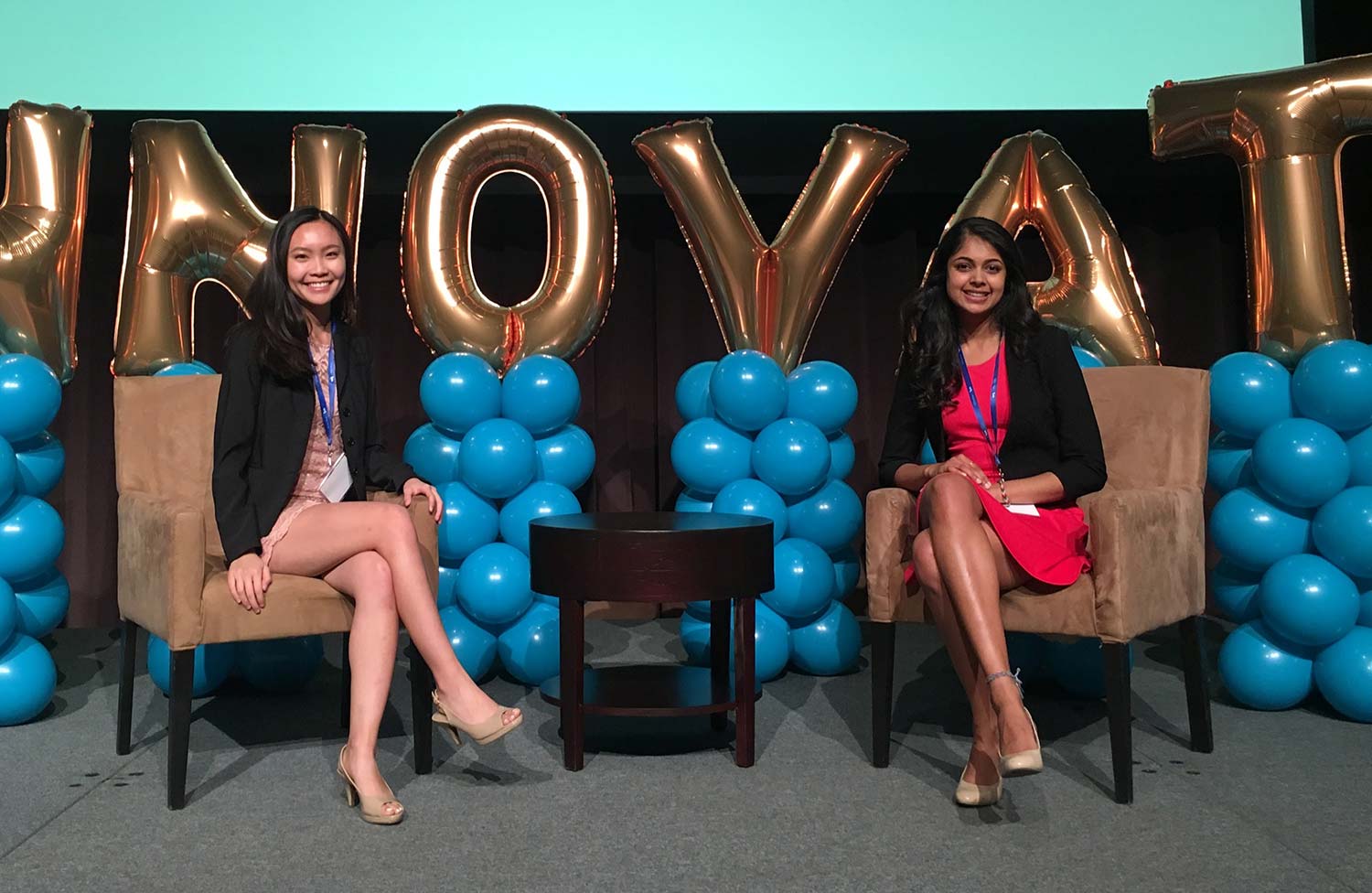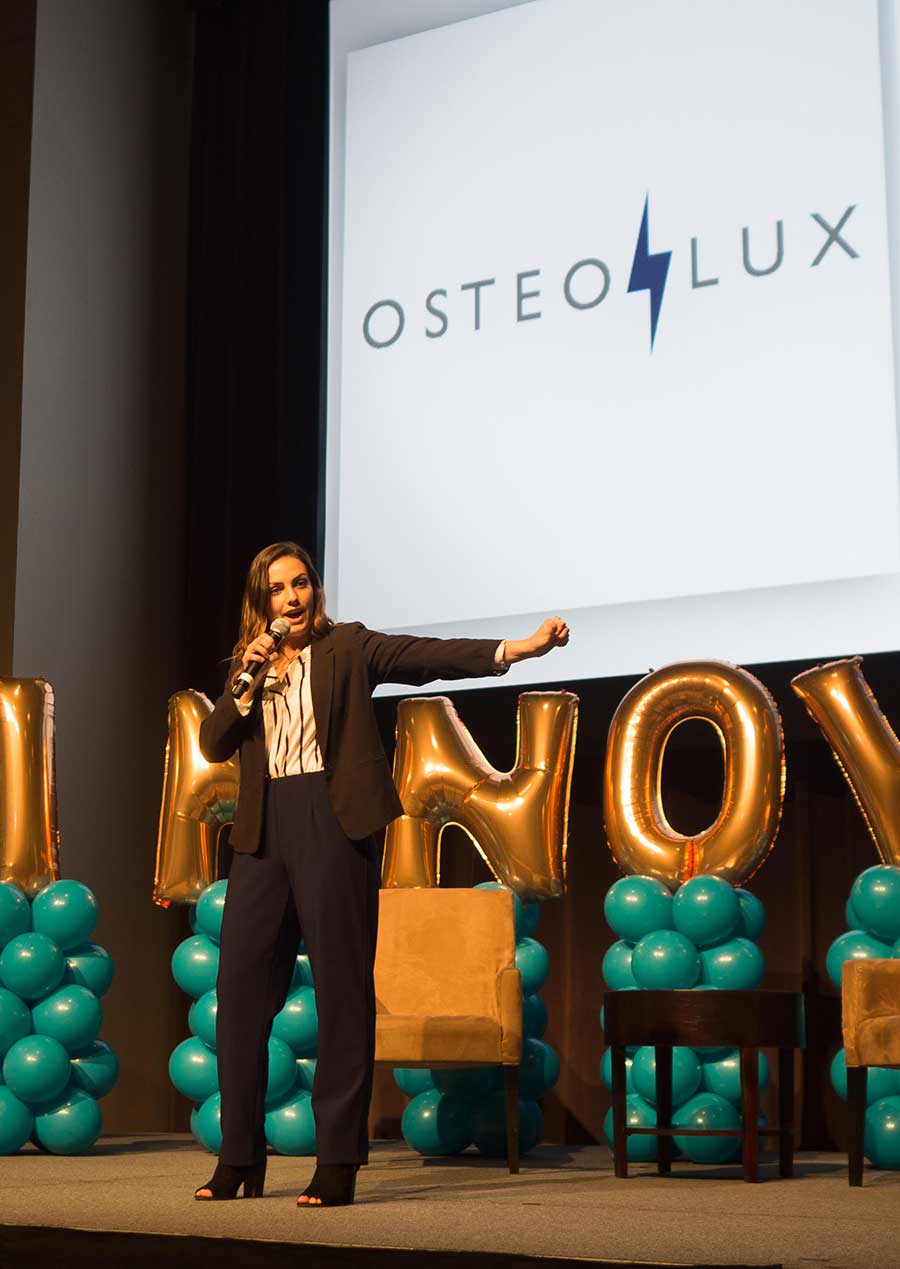
By:
- Katherine Connor
Published Date
By:
- Katherine Connor
Share This:

Kristine Khieu and Surabhi Kalyan, bioengineering students and co-founders of SoleMate, won first place at the Ignite Conference pitch competition. Photo credit: SoleMate
Engineers Sweep Entrepreneur Challenge Startup Stage at Ignite
Engineers showed up in force at the second annual Ignite Conference pitch competition at UC San Diego. Almost a third of the 29 startups pitching their innovative business ideas during the Entrepreneur Challenge-led elevator pitch competition were founded by engineers—including the first, second and third place winners. That’s right, it was an engineering clean sweep.
Each startup had 90 seconds to wow a panel of eight judges for a shot at cash prizes ranging from $1,000 for sixth place, to $2,500 for the winning team.
The top honor went to SoleMate, co-founded by bioengineering undergraduate students Surabhi Kalyan and Kristine Khieu. SoleMate is a smart shoe insole that monitors the weight a patient in rehabilitation is bearing on their foot, and provides real time feedback via a mobile app.
“When we walk out of the hospital door, care stops there,” Kalyan said during her pitch. “In fact, every year 5.5 million patients return for the exact same problem. The major cause of re-admission is poor rehabilitation. And for all lower extremity cases, this rehabilitation is crutches. Therefore, we introduce SoleMate, a smart shoe insole that optimizes crutch use by monitoring weight applied and providing real time feedback.”
SoleMate has already developed a working prototype, and has partnerships with Rady Children’s Hospital and the Jacobs School of Engineering.

Taylor Williams, a bioengineering student, pitches OsteoLux on stage at the pitch competition. She won second place out of 29 competitors. Photo credit: Nick Trejo
The second place winner, OsteoLux, took home $2,000. Taylor Hall Williams and Allison Duchnak, both bioengineering undergraduates as well, co-founded the company after witnessing first-hand the challenge of curing bone cement during orthopedic surgery.
“Currently, in the 10 minutes that it takes bone cement to dry, the surgeon must physically hold the implant to the bone in order for it to dry in the correct place,” Williams said. “That is not only uncomfortable for the surgeon, but it’s a waste of time and money. In fact $620 billion per year are wasted simply waiting for the bone cement to dry. Not anymore. At OsteoLux, we are creating a device that can do this in a matter of seconds.”
It wasn’t a coincidence that the top two teams, both founded by females, happened to be bioengineering students. The concepts behind SoleMate and OsteoLux originated in bioengineering professor Adam Engler’s Clinical Bioengineering course.
“The premise of the class is that in fall, students spend a week doing a medical school-like orientation with me, going over the regulations required to be in a hospital setting,” Engler said. “Then they spend nine weeks doing three separate three-week rotations with clinical faculty in the hospital. They’re not just supposed to be observers: what they’re doing is observing the physician, and acting as an engineering consultant.”
The SoleMate and OsteoLux co-founders encountered the problems they’re now solving during their clinical rotations, and started developing prototype solutions as part of the course, as well.
And they’re not the only ones to commercialize their solutions. In fact, Engler estimates that in the four year-history of the class, approximately 40 percent of teams continue with their idea in some form or fashion, from securing patents to actually forming companies.
Clinical Bioengineering is growing in popularity, from just three teams and six students its first year, to 10 teams with 20 students this year and a projected 30 teams next year.
While bioengineering stole the show, aerospace engineering student Darren Charrier pulled through with a third place-winning pitch of his company Voyager Space Technologies.
Charrier spoke about the challenge of sourcing mechanical, electrical and software components for satellites: it’s time consuming and often results in inaccurate purchases, which then means the engineers have to re-do their physics analysis with the new components.
“That’s why we’re developing SatBuilder, which is an artificially intelligent software solution which allows engineers to input their mission requirements-- where are they sending their satellite, how much power does it need,” Charrier said. “We’ll tell them all the components that meet their [specifications]. Our mission is to drive down the cost of going to space and increase the accessibility.”
Share This:
You May Also Like
Stay in the Know
Keep up with all the latest from UC San Diego. Subscribe to the newsletter today.


